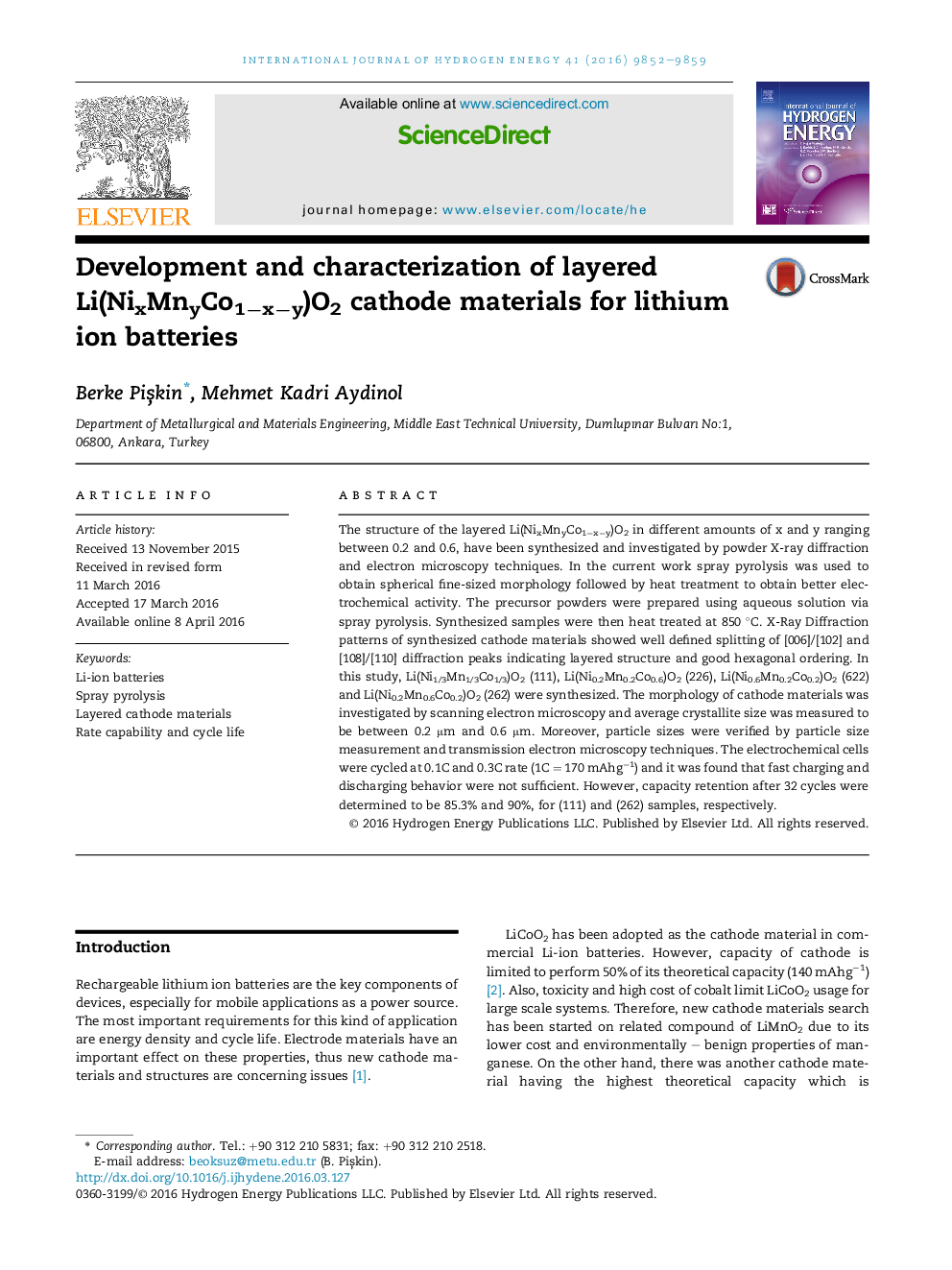| کد مقاله | کد نشریه | سال انتشار | مقاله انگلیسی | نسخه تمام متن |
|---|---|---|---|---|
| 1277036 | 1497402 | 2016 | 8 صفحه PDF | دانلود رایگان |

• Li(NixMnyCo1−x−y)O2 cathode materials were produced by spray pyrolysis.
• The synthesized powders are composed of spherical aggregates of small grains (crystallites).
• The electrochemical behaviors of Li(NixMnyCo1−x−y)O2 cathode materials were investigated.
• Higher ordering of crystal structure is related with unmixed Li/(Ni–Mn–Co) cations.
• An improved in the rate capability is required for all cathode materials investigated.
The structure of the layered Li(NixMnyCo1−x−y)O2 in different amounts of x and y ranging between 0.2 and 0.6, have been synthesized and investigated by powder X-ray diffraction and electron microscopy techniques. In the current work spray pyrolysis was used to obtain spherical fine-sized morphology followed by heat treatment to obtain better electrochemical activity. The precursor powders were prepared using aqueous solution via spray pyrolysis. Synthesized samples were then heat treated at 850 °C. X-Ray Diffraction patterns of synthesized cathode materials showed well defined splitting of [006]/[102] and [108]/[110] diffraction peaks indicating layered structure and good hexagonal ordering. In this study, Li(Ni1/3Mn1/3Co1/3)O2 (111), Li(Ni0.2Mn0.2Co0.6)O2 (226), Li(Ni0.6Mn0.2Co0.2)O2 (622) and Li(Ni0.2Mn0.6Co0.2)O2 (262) were synthesized. The morphology of cathode materials was investigated by scanning electron microscopy and average crystallite size was measured to be between 0.2 μm and 0.6 μm. Moreover, particle sizes were verified by particle size measurement and transmission electron microscopy techniques. The electrochemical cells were cycled at 0.1C and 0.3C rate (1C = 170 mAhg−1) and it was found that fast charging and discharging behavior were not sufficient. However, capacity retention after 32 cycles were determined to be 85.3% and 90%, for (111) and (262) samples, respectively.
Journal: International Journal of Hydrogen Energy - Volume 41, Issue 23, 22 June 2016, Pages 9852–9859